If you are tired of your high-electricity bills and sending your hard-earned money to the utility company every month, it's time to switch to clean and green energy with solar power panels. Given that many different solar panel dimensions are available, it can be challenging to finalize the right one.
On average, a solar panel produces 80 watts per hour to 400 watts per hour, depending on the size and location. Jackery SolarSaga Solar Panels combined with Jackery Explorer Portable Power Stations can charge all your appliances anytime and anywhere and are regarded as the best solar power generators on the market.
These portable solar panels are lightweight and compact enough to carry wherever you go. In this Jackery guide, we'll help you understand which solar panel dimensions can help you charge all your gears with eco-friendly energy.
What Are The Solar Panel Dimensions?
Solar panels can be handy for generating power when you're hiking, camping, or planning to go off-grid. Generally, the physical size of the solar panels represents the solar panel dimensions.
However, different types of solar panels, including residential roof panels, portable solar panels, and commercial panels, have different sizes and power outputs. So, how do you decide which solar panel size is the best?
The simple answer is to determine the power you require, the hours of direct sunlight you get, etc. Evaluating the solar panel requirement is the best method to find the right dimension and go solar.
Pro Tip: Always remember, the more solar cells the panel has, the better it can absorb the sun's energy and the better it can charge the power station or the electrical devices.
What Is A Solar Panel Made Of?
Solar panels consist of silicon or PV cells that convert the sun's energy into electricity. Solar cells are made of different types of silicon cells responsible for conversion. However, not all solar cells have the same efficiency. Typically the efficiency of solar panels ranges from 15-20%. However, advanced solar panels with monocrystalline solar cells have an efficiency that exceeds 20%.
Jackery SolarSaga Solar Panels are made of monocrystalline solar cells with the IBC Solar technology to reach the industry's highest 24.3-25% efficiency.

In addition, the ETFE-laminated case, IBC solar technology, and waterproofing capabilities ensure the Jackery SolarSaga Solar Panels withstand harsh weather conditions and efficiently convert solar energy to usable electricity.
What Is The Area of a Solar Panel?
Like solar panel dimensions, the area of the solar power panels will depend on the type of solar cells, the weight, wattage/voltage, panel material, etc.
You can multiply the length and width of the solar panels to calculate their area.
Here is an example:
Suppose you want to calculate the area of Jackery SolarSaga 100W Solar Panel.
Solar Panel Dimensions (unfolded) = 48 × 21 × 0.2 in (1220 × 535 × 5 mm)
Let us convert mm to feet to make calculation easy.
Length = 1220 mm = 4 feet
Width = 535 mm = 1.7 feet
Therefore, the average area of the single solar panel measures 4 × 1.7 feet = 6.8 sq. feet.
Standard Solar Panel Dimensions
Standard solar panel dimensions vary depending on the type of panel and manufacturer. Most home solar panels are composed of approximately 60 cells. A typical home solar panel's dimensions are about 65 inches by 39 inches.
On the other hand, commercial or utility-scale solar panels are composed of 72-cell and 96-cell. As more solar cells are combined, they are larger than residential solar panels. The commercial solar panel's dimensions are approximately 77 inches by 36 inches. Here are the top three Jackery SolarSaga Solar Panels you can choose for your home.
- The Jackery SolarSaga 40W Mini Solar Panels with 40W capacity have dimensions around 40.1×11.8×0.7 inches.
- Jackery SolarSaga 100W Solar Panels are portable, with solar panel dimensions of 48.03x21.73x0.79 inches.
- The Jackery SolarSaga 100 Prime Solar Panels can be installed on the RV or camper rooftop, and have dimensions around 38.8 x 21.7 x 1.1 inches.
- Additionally, the Jackery SolarSaga 200W Solar Panels have sizes around 92.13 x 21.73 x 0.98 inches.
- Jackery SolarSaga 500X Solar Panels have high-power output, with solar panel dimensions of 98.15 × 39.21 × 11.57 inches.
Let us wrap the solar panel dimensions available in the market in this table.
|
Configuration |
Length (in inches) |
Width (in inches) |
Depth (in inches) |
|
60-cell |
39” |
66” |
1.3” |
|
72-cell |
36” |
77” |
1.3” |
|
96-cell |
42” |
63” |
1.38” |
Common Solar Panel Dimensions By 3 Aspects
Standard solar panel dimensions vary depending on physical size, number of solar cells, and power rating or wattage. Here is how residential and commercial solar panels differ.
- Physical Size:Residential solar panels are typically around 65 inches by 39 inches. Commercial or utility-scale solar panels are much larger and are 77 inches by 36 inches.
- Number of Solar Cells:Residential solar panels typically have 60 cells, whereas commercial and utility-scale solar panels have 72 or 96 solar cells.
- Power Rating or Wattage: A solar panel's power rating or wattage is measured in watts (or W). Residential solar panels typically have a power rating of around 80-360W. Commercial solar panels have a wattage of 400W or more.
It's important to note that these are only approximate figures, and actual dimensions may vary depending on the manufacturer and type of panel.
Different Types Of Solar Panel Dimensions

Solar panel sizes vary depending on the manufacturer, weight, number of solar cells attached, etc. The most common types of solar panel dimensions include Single PV (photovoltaic cells), standard residential panels, standard commercial panels, RV, van, camper solar panels, and off-grid solar panels.
Here is a quick breakdown of the approximate size of each solar panel type.
|
Panel Type |
Solar Panel Dimensions |
|
Single PV Cells |
6 inches by 6 inches |
|
Standard Residential Panel |
64.8 feet by 39 feet |
|
Standard Commercial Panel |
78 feet by 40 feet |
|
RV, Van, or Camper Solar Panel |
36 inches by 26.3 inches |
|
Off-Grid Solar Panel |
62 inches by 34 inches |
Now that you know the size, here is detailed information about solar panel types.
- Single PV (Photovoltaic Cell)
These panels are typically used for small-scale objects such as powering a small electronic device. Multiple PV cells are combined to form a large solar panel and charge appliances. They can be as small as 6 inches × 6 inches and have a power output of around 10-50 watts.
- Standard Residential Panel
These solar panels are often used in residential solar power systems. Around 60 cells or 72 cells are combined to form standard residential panels. They are typically larger than single PV panels and have a power output of 100-400 watts. They are often used with power stations to store the power generated and use the energy during night power outages.
- Standard Commercial Panel
Around 96 solar cells are combined to form a standard commercial panel. They're typically larger in size and ideally suited for commercial applications. The standard dimensions range around 6.5 feet by 3.35 feet, weighing approximately 50 pounds each.
- RV, Van, Or Camper Solar Panel
The solar panels are designed to provide you power when you enjoy outdoor adventures like camping or hiking. They are typically smaller than residential panels and have a power output of 100-150 watts. The solar panels are around 36 inches by 26.3 inches and can be easily carried out. 
- Off-Grid Solar Panel
Last but not least, off-grid solar panels are designed for homeowners wanting to enjoy a modern off-grid lifestyle where they can cut connections from the electrical grid. They have dimensions around 62 inches by 34 inches and work in combination with solar power batteries.
If you're looking for a solar power panel that can serve off-grid lifestyles, RV trips, and camping trips and acts as a reliable power outage solution, you can invest in Jackery SolarSaga Solar Panels and Explorer Portable Power Stations. Different dimensions of solar panels and powerful solar power stations ensure that you have the power to charge and run all the essential electrical appliances, no matter where you are.
Factors Determine The Solar Panel Dimensions
Before investing in a solar panel, you'll need to consider a few factors that determine the solar panel's size.
Solar Panel Wattage/Voltage
The solar generator consists of solar panels and a power station that produces power in watts. The larger the surface area of the panel, the more energy it can absorb from the sun. Hence, the more power your solar generator can produce to charge appliances.
Solar Panel Material
Another factor that affects the dimensions of a solar panel is its material. Monocrystalline is the most efficient and expensive material used to manufacture solar panels. It is highly preferred over thin-film or polycrystalline solar panels due to its lighter and compact nature.
Electricity Output Needed
Last but not least, the electricity output required determines the right size of solar panels. For instance, if your home area receives 4 hours of sunlight and you wish to power your home with solar energy, chances are you require higher-watt solar panels combined with a power station to efficiently convert the sun's energy into usable electricity.
Remember, you'll need to check your utility bills and calculate the average monthly and annual energy usage while deciding which solar panel dimension you need to buy. It's wise to purchase a few solar panels and combine them with a portable power station. This way, you can not only leverage the benefits of power when you're away from home or the electric grid but also charge appliances when the sun is no longer shining.
What Are The Ideal Solar Panel Dimensions?

Solar panel efficiency refers to the ability of PV (or photovoltaic panels) to transform solar energy into usable electric energy. That means the higher the solar panel efficiency, the more power it can absorb in less time.
Understanding your power needs and factors that affect the dimensions will help you choose the ideal solar panel. If you're still apprehensive about suitable solar panel dimensions, here are the key points to consider.
- Calculate the energy requirements and type of solar panel you need.
- Determine how many hours of sunlight you receive.
- Analyze how much energy the solar panels can absorb (i.e., the efficiency).
Remember, the ideal size of solar panels will eventually depend on your requirements. For instance, if you wish to power all your small and large appliances and enjoy an off-grid lifestyle, consider investing in highly efficient Jackery SolarSaga Solar Panels and pair them with Jackery Explorer Portable Power Station.
The Best Portable Solar Panel With Jackery

Jackery portable solar panels are designed to help people with power on the go. The strapped and folded design of Jackery SolarSaga Solar Panels makes them simple to carry and use. The best part is that they're compatible with Jackery Explorer Portable Power Stations that store the electricity generated and keep your appliances charged. It could be an outdoor adventure partner or a home backup solution.
Below are the top Jackery SolarSaga Solar Panels picks for 2025.
Jackery SolarSaga 200W Solar Panel
The advanced solar cells on the Jackery SolarSaga 200W Solar Panels make the product highly efficient compared to the other panels available on the market.
With dimensions (unfolded) around 92.13 x 21.73 x 0.98 inches, the solar panels can conveniently be carried outdoors to charge most of the gears by combining them with power stations.
Additionally, the ETFE-laminated case and IP68 waterproof rating ensure that solar panels can endure harsh conditions and last for decades.
|
Products |
Efficiency |
Dimensions |
Weight |
Compatible with Explorer |
Specialties |
|
Jackery SolarSaga 200W Solar Panel |
24.3% |
Folded: 24.21 x 21.73 x 1.57 in (615 x 552 x 40 mm) Unfolded: 92.13 x 21.73 x 0.98 in (2340 x 552 x 25 mm) |
13.67 lbs ± 0.66 lbs (6.2 kg±0.3 kg) |
Jackery Explorer 2000 Plus Portable Power Station |
Built to last with IP68 waterproof rating and an ETFE-laminated case. It is foldable and portable to carry on all your off-grid journeys. |
Jackery SolarSaga 100W Solar Panel
With a solar conversion efficiency of 24.3%, these monocrystalline solar panels are suitable for outdoor activities and even unexpected power outages. Teaming it up with Jackery Explorer Portable Power Station, you can charge all appliances during off-grid adventures.
It is portable in nature with a size of 48.03x21.73x0.79 inches. The two USB outputs, multi-layer cell technology, and ETFE-laminated case make the solar system perfect for RV camping, off-road adventures, fishing, emergency, etc.
|
Products |
Efficiency |
Dimensions |
Weight |
Compatible with Explorer |
Specialties |
|
Jackery SolarSaga 100W Solar Panel |
24.3% |
Folded: 24.21 x 21.73 x 1.57 in (615 x 552 x 40 mm) Unfolded: 92.13 x 21.73 x 0.98 in (2340 x 552 x 25 mm) |
7.94 lbs ± 0.66 lbs (3.6 kg ± 0.3 kg) |
Jackery Explorer 1000 Plus Portable Power Station |
1* USB-C(5V,3A) output port and 1* USB-A(5V, 2.4A) output ports available can charge 2 small devices directly. It is ideal for unexpected power outages and off-grid camping. |
Jackery SolarSaga 80W Solar Panel (Out of Market)
The dual-sided solar panels are fully compatible with all Jackery Explorer Portable power stations. In addition, the extra-white glass used on the back side of the panel boosts its conversion rate.
With the SolarSaga 80W Solar Panel, you get a two-meter extension cable to pair it with the power stations and charge appliances anytime, anywhere. Additionally, the panels have IP68 waterproof and dustproof ratings with an efficiency of 25%, making them a robust power solution.
|
Products |
Efficiency |
Dimensions |
Weight |
Compatible with Explorer |
Specialties |
|
Jackery SolarSaga 80W Solar Panel |
25% |
906 x 528 x 27 mm |
5.1Kg |
Compatible with all the Jackery portable power stations. |
The dual-sided panels boost the conversion rate, and the IP68 waterproof and dustproof rating makes it ideal for all environments. |
Remember, solar panels do not work independently. You'll need to purchase the compatible Jackery Explorer Portable Power Station to power your electrical appliances. The Solar Generator, thus formed, will power most of your home appliances using solar energy.
Solar Panel Dimensions FAQs
Solar panels are the best way to utilize solar energy to its fullest potential. But before you invest your hard-earned money into purchasing panels, here are a few commonly asked questions about solar panel dimensions.
What is the size of an individual solar cell?
Though the exact size of an individual solar cell used in the solar panel depends on the type, manufacturer, etc., the most common dimensions include the following:
- 125 mm × 125 mm or 5 inches
- 156 mm × 156 mm or 6 inches
However, homeowners should consider the efficiency and material type of solar panels while finalizing the right one. For instance, monocrystalline solar cells with an efficiency of more than 20% are preferable to others on the market.
How to calculate solar power?
Most residential solar panels produce an output between 100 watts to 400 watts, although some panels have been known to generate more than 400 watts of power. Based on the watt power of your solar panel, you can calculate how big your solar system needs to be.
To calculate the amount of solar power of the solar panel, you'll need to know its efficiency rating, the amount of sunlight it receives, and the size of the solar panel.
The formula to calculate the power output will be:
Power (W) = Efficiency (%) × Surface Area (sq ft) × sunlight (W/ sq ft)
What can a 100W solar panel run?
Jackery SolarSaga 100W Solar Panels aren't designed to run a house independently, but they can charge small devices like smartphones and tablets with their two USB output ports. However, you can combine SolarSaga 100W Solar Panels with Jackery Explorer 1000 Plus Portable Power Station to power all your home appliances. With only two SolarSaga solar panels, you can power the Jackery Explorer 1000 Plus Portable Power Station within 9 hours.
How to take advantage of solar panels?
Due to their portability and compatibility, Jackery Explorer Portable Power Stations are ideal companions for solar panels. When solar panels absorb the sun's energy and transform it into electricity, the power station acts as a storage source where the power is stored. You can connect the solar power station to any of your electrical appliances and keep it running for hours. Some other benefits of the Jackery Solar Generator include:
- Portable: Jackery solar panels and power stations are portable in nature, meaning you can carry them anywhere and recharge electric devices, including mini-fridges, electric grills, electric blankets, etc.
- Quiet:Unlike gas generators, Jackery Solar Generator operates without noise. Thus, you can use them at night without worrying about sleep disturbance.
- No Pollution:As solar generators work by converting clean solar energy into electrical energy, there is no pollution. Hence, when you switch to solar, you switch to a clean and green energy source.

Final Thoughts
Planning outdoor activities like camping, hiking, or an RV trip is a fantastic, rejuvenating experience. But you'll need a reliable power solution to charge your electrical devices away from the grid. Portable solar panels and power stations allow you to harness the sun's energy into electricity and store it for later use.
Though multiple solar panel dimensions are available, consider choosing a power source that can not only charge small appliances but also act as a reliable power source with an extended lifespan. Learn More about Jackery Solar Power.
For more updates, exclusive deals, and product news, you can subscribe to the Jackery newsletter!

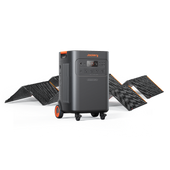











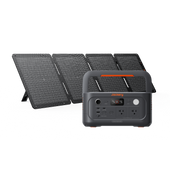





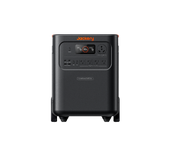
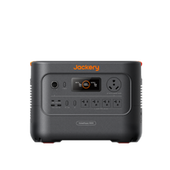





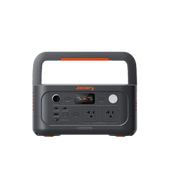





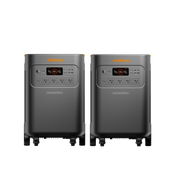
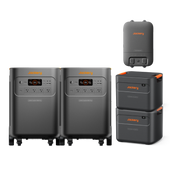





![[Add - on] Jackery Manual Transfer Switch for Explorer 5000 Plus - Jackery](http://www.jackery.com/cdn/shop/files/add-on-jackery-manual-transfer-switch-for-explorer-5000-plus-9017324.png?v=1754016782&width=170)
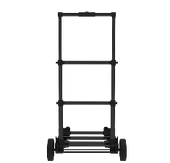
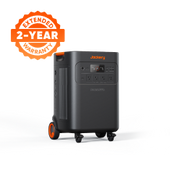
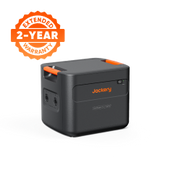
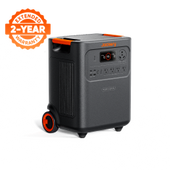
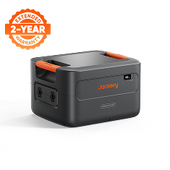
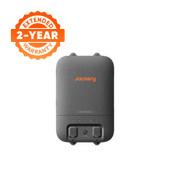



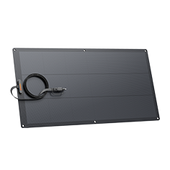
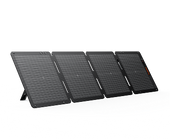




















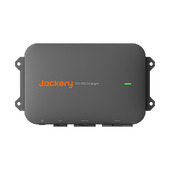




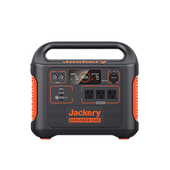







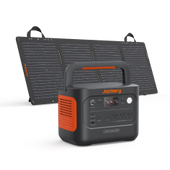
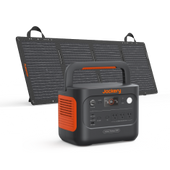





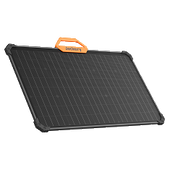


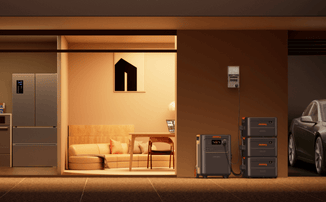













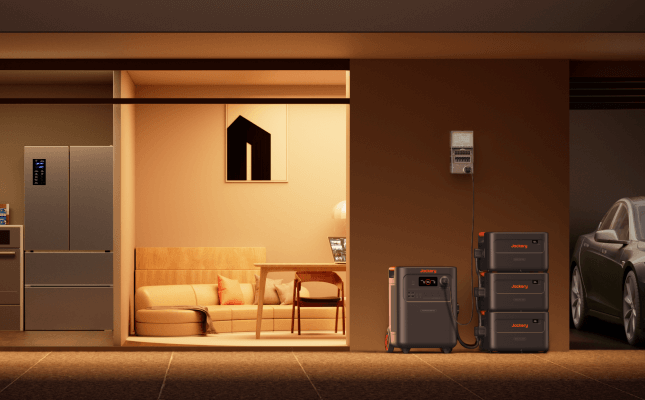


















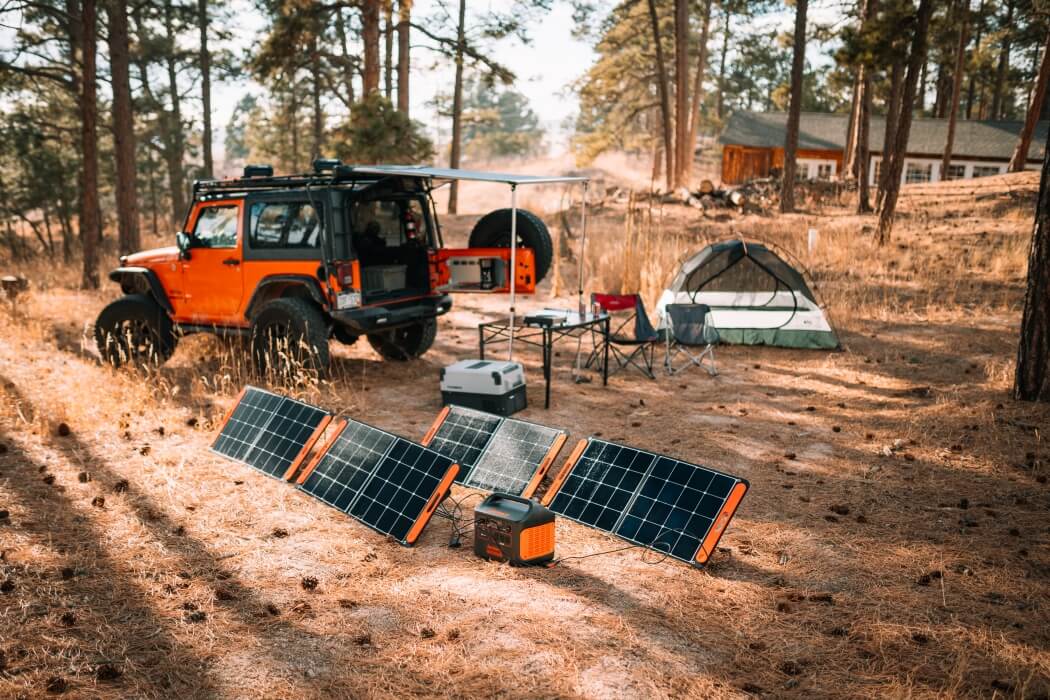



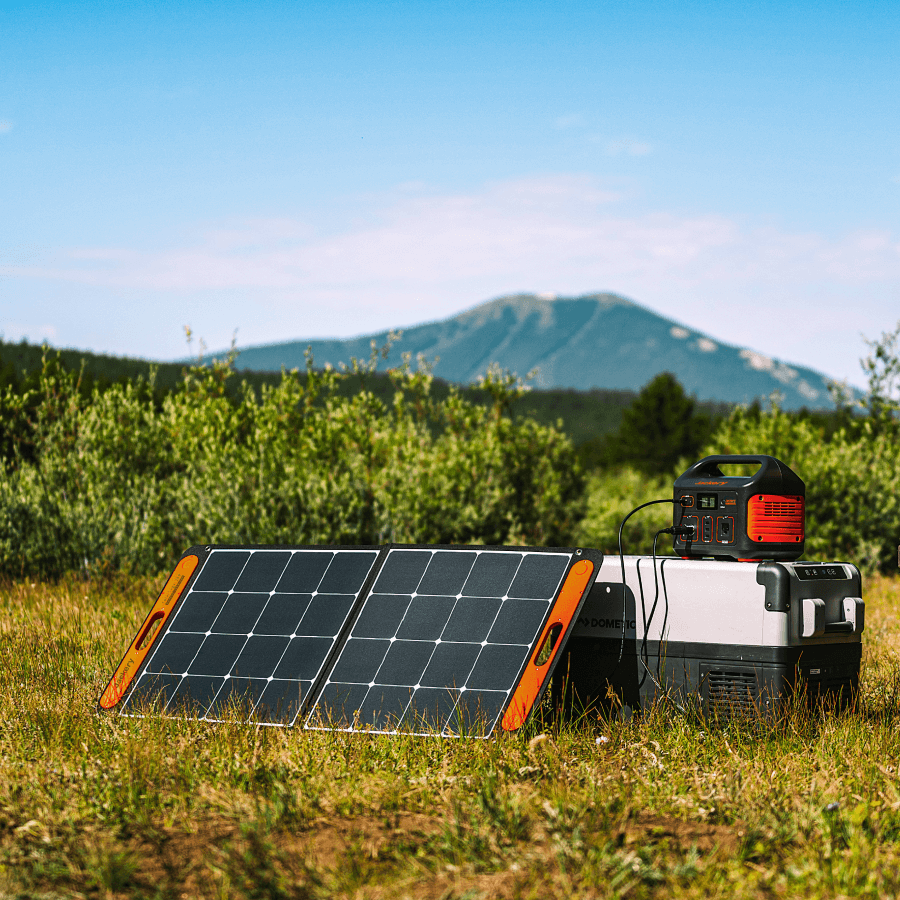


Leave a comment